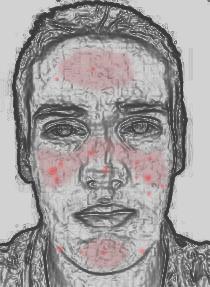Emily, I've been diagnosed with rosacea and have been taking antibiotics for quite some time now to counteract the symptoms. I don't want to have to take antibiotics the rest of my life and wonder if there are more holistic, healthier solutions out there?
--Brent, Atlanta, GA
Brent, you are not alone. The National Rosacea Society (NRS) estimates that nearly 14 million people suffer from this chronic skin disorder, typically characterized by persistent redness and flushing of the facial skin. Other symptoms can include feelings of dryness and tightness, burning sensations and even eye irritation. Common medical treatment for rosacea is different for each patient, but tends to be a combination of oral antibiotics, topical medications and even treatment with lasers. The NRS states that dermatologists often prescribe long-term use of topical therapy to maintain remission.
Are there more holistic, drug-free ways to avoid flare-ups? The first reaction many have is to simply avoid anything that causes the skin to flush: sun exposure, wind, alcohol, caffeine consumption, and stress. Yeah, right. No problem.
Steve Coward, N.D., of Asheville Natural Health and Homeopathy, believes there is a better way to approach rosacea. "The only real conventional treatment that works consistently is oral antibiotics. But no definitive bacterial cause for the disease has been established. The problem is generally the result of an imbalance in the body." He goes on to compare treating rosacea with antibiotics to keeping a sick person in a plastic bubble. The person may never get worse, but has he really been helped? Dr. Coward believes that homeopathic remedies, changes in diet, and occasional supplementation can help to correct imbalances in the body, but he stresses that each treatment must be tailored to the individual. The National Rosacea Society refused to comment on the efficacy of any holistic treatments, and only stated that based on surveys conducted by their organization, the non-medical treatment favored by the majority of rosacea sufferers was avoiding triggers. I do believe this makes a difference. However, I know that anyone who lives in the real world encounters all of the triggers mentioned, so seeking the help of a qualified naturopathic doctor, holistic esthetician, or homeopath, will probably be the most helpful solution.
What can you do right now? Start by cleansing your face the right way. In the heat, it may be tempting to jump in the shower and let ice cold water beat down on you. Don't do it! Same goes for extremely hot water. Extremes in temperature can cause rosacea to become more apparent. Use tepid water for washing and rinsing. Look for words like "fragrance-free," "noncomedogenic," and "mild" on your skincare products. Whole milk can be a very gentle cleanser; just be sure to rule out dairy as a trigger before using it. Tempting ms it may be to scrub away the dry patches of skin that often accompany rosacea, you should avoid scrubs, clay masks, and dry brushing. Using a moisturizer that does double-duty as sun protection is a good idea. Also, try using this olive oil treatment at night: Olive Oil Skin Conditioner
A really simple mix that works to help rosacea and other skin ailments. I recommend using this treatment at night because it can make you look a tad shiny.
1. Mix 1 tablespoon Olive Oil with 1 drop of Chamomile Essential Oil.
2. Gently massage onto face, neck and ears (all areas where rosacea can be found).
Another thing to keep in mind, is the debilitating effect a chronic skin problem can have on your self-esteem. Having struggled with acne from the minute I hit puberty until my late teens, I can attest to the increase in self-consciousness (and at times, anger, sadness and depression) that comes with red, blotchy skin. As an adult, these feelings can be even worse. I encourage you to stay aware of your mental health and make sure not to overlook your great physique, hair, personality, and so on. Discuss any concerns you may have with your healthcare provider.
One more suggestion, Brent, and bear in mind that many women, including myself, don't consider men wearing this a major no-no. Makeup. So long as you stay away from the sparkly hot pink eyeshadow (as all my readers should do), a little carefully applied and properly blended foundation may help you to hide the redness associated with this condition, thereby alleviating some of that self-consciousness. Dr. Zoe Draelos, clinical associate professor of dermatology at Wake Forest University, states that "camouflaging with green- and yellow-tinted skin-tone foundations usually works best, while most should avoid those covering products with pink or orange hues." If you're so inclined, try a liquid foundation. And look for a hypo-allergenic product.
Good luck!
Emily Ray has been creating natural beauty products for 6 years, and she is a freelance writer based in Atlanta, GA. To ask her a question, email askemily@newlifejournal.com
COPYRIGHT 2004 Natural Arts
COPYRIGHT 2004 Gale Group



